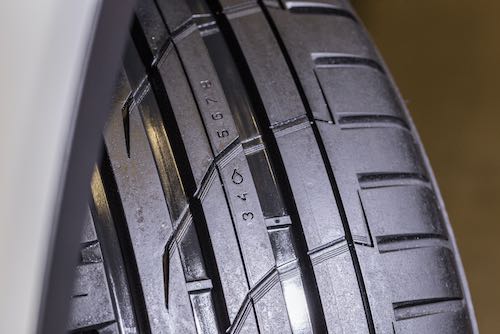When you drive in rain or other wet conditions, your car might be susceptible to hydroplaning. Hydroplaning occurs when the tires aren’t able to push away the water from the contact area between the tires and the road surface or then store the water within the tread. The process involves the physical movement of the water away from the surface by being pushed quickly to the sides as the tire rolls over the surface, squeezing it away from the closing gap or then stored in the grooves. A wide slick tire moving at high speed is your worst option, while a tire with a deep grooved slim tire moving slowly would be your best option to prevent hydroplaning.
Tire manufacturers have made continuous improvements to all-season tires that reduce the risk for hydroplaning. Some are done through wider grooves, sipes between the grooves, and different other ways to channel water to the sides of the tires. If the tires have polished grooves, they will be able to increase the flow, as it will be a smooth flow that is not disruptive. This allows for faster flow. This is all good when the tires are new, but as the tires will wear, so will the beneficial properties. High speed increases the risk so that the faster you go, the more likely you are to experience it. When you experience hydroplaning, you lose contact with the road surface and thus also the control of the car. This can be very dangerous. Most often, you will only lose contact momentarily, but in bad cases, you can lose total control, and it can cause bad accidents.
If you notice that the tendency of hydroplaning becomes more frequent, you should start with checking your tires and especially the tread depth. If your tires are close to the 5/32 inches depth level, you should get a new set of tires. This will make sure that you will be better prepared for the wet conditions. Make sure that you invest in high-quality tires that are good for wet conditions. All-season tires will need to handle the occasional heavy summer rain without jeopardizing your safety.
If the tires have a good tread depth, you should check the tire pressure to ensure that you have sufficient pressure as per the owner’s manual. Too low pressure increases tire wear and consumption, so it can be very costly to drive around with the wrong tire pressure. So both are important to check.
The same as above applies to if you are using all-weather tires for the full year, as they must be able handle both wet roads and snowy roads. Here the tires will have to combat both hydroplaning based on rain and slush. Driving in slush can be very tricky as it is very slippery, and it can easily cause the vehicle to be pushed sideways. For all cases of hydroplaning, they all benefit by tires with deep tread depth and low speed.
For more information regarding new tires, visit: https://www.nokiantires.com/
